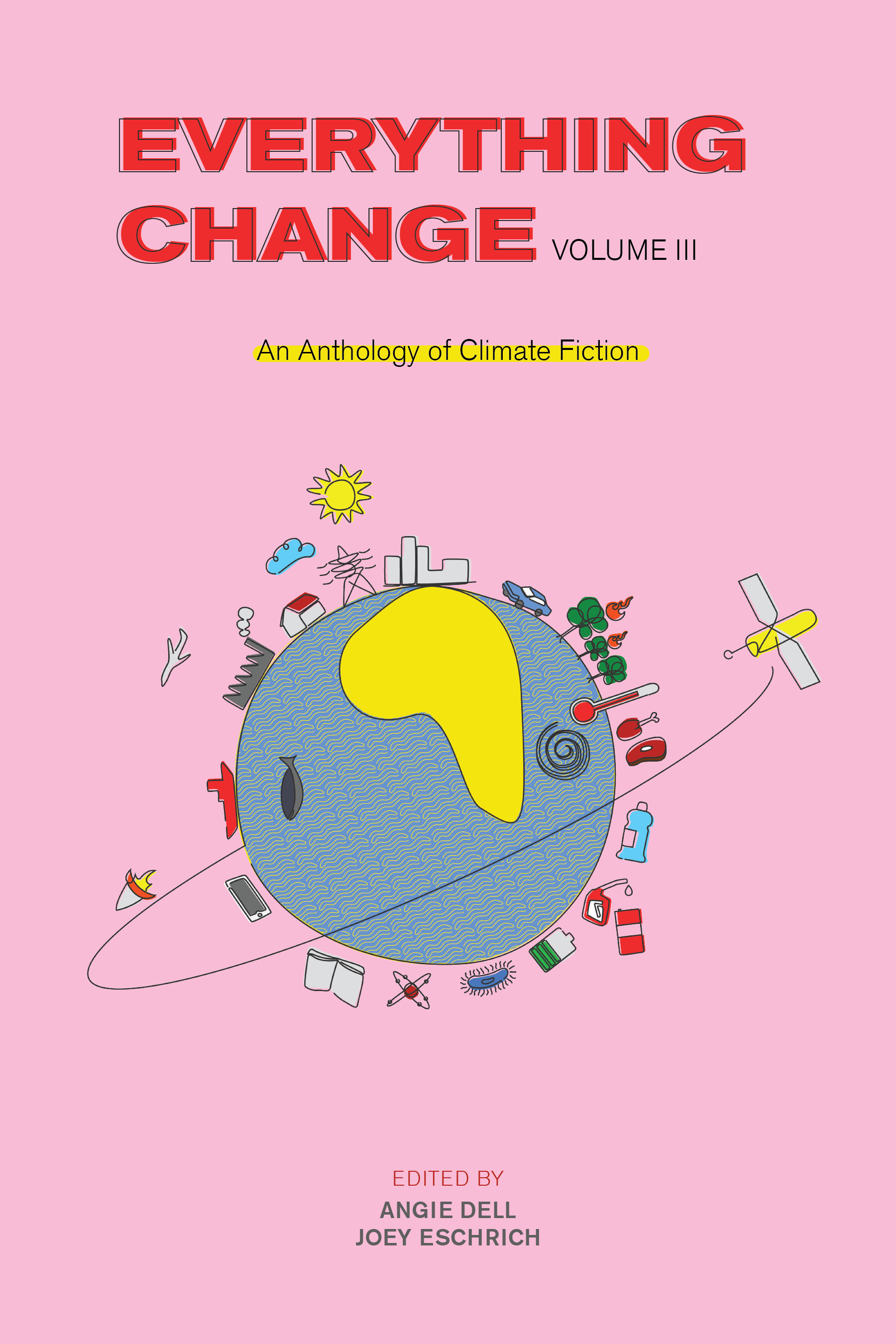Amanda Baldeneaux is living proof that a writer can create solid work under the most trying of circumstances.
Last spring she penned a powerful short story called “Invasive Species” while pumping milk for her infant daughter in the middle of the night.
“I actually wrote this story around 2 a.m.,” said Baldeneaux, a mother of two who lives in Denver. “If your child sleeps well and you have good inspiration and motivation, you can get some good writing done while pumping.”
Not only was it good writing, but “Invasive Species” netted Baldeneaux $1,000 in contest winnings and a spot in a new digital anthology sponsored by Arizona State University’s Imagination and Climate Futures Initiative. The initiative is a partnership between the Center for Science and the Imagination and the Virginia G. Piper Center for Creative Writing.
"Everything Change, Volume III"
"Everything Change, Volume III," an anthology featuring Baldeneaux and nine finalists from the initiative’s global climate fiction short story contest in 2020, will be released on April 22 to coincide with Earth Day.
Now in its third iteration, the international contest received 580 submissions from 77 different countries. This year’s guidelines asked writers to address how humans can live within Earth’s planetary boundaries at the individual, organizational, communitywide and societal levels.
According to Joey Eschrich, editor and program manager for the Center for Science and the Imagination, these literary works ranged from far-future tales of ambiguous utopian societies, to action-thriller yarns, weird and realistic fiction, fabulism and body horror.
“‘Invasive Species” impressed our judges because of its sharp, vividly drawn main character and its grounded vision of a near-future choked by environmental austerity,” Eschrich said of the 5,000-word short story. “Amanda is also clever and subtle in her use of metaphor and evocative imagery — from natural history museum dioramas frozen in time to towering brown clouds blocking our view of the horizon — to express the malaise and stubborn hope of facing a world in the midst of crisis and slow transformation.”
Submissions were subject to multiple rounds of blind review by an editorial team that included experts on climate science, sustainability, creative writing and environmental literature, including Claire Vaye Watkins, a former Guggenheim Fellow.
Two other featured stories in "Everything Change, Volume III" are written by people connected to ASU: Jules Hogan, an MFA candidate who edits ASU’s Hayden's Ferry Review, and Kathryn E. Hill, also an MFA graduate.
Baldeneaux said “Invasive Species” is about Viviana, an aspiring interior decorator working as a diorama painter and night nanny to pay for her father’s home-based intensive care. Her life is on pause to support his medical bills, including time off school and her own medical care and transition surgeries. As the city’s transportation systems shut down, Viviana has to navigate across town to reach her second job, finding her own forward momentum in a world stalled by the devastating impacts of climate change.
“I was nervous writing about a trans character because I’m not trans, and I didn’t want to infringe on a story that’s not my own,” said Baldeneaux, who donated a portion of her contest earnings to three organizations who advocate for trans rights and visibility. “But I also think that trans people exist in our world and they should be portrayed in fiction, movies and television series, and included and normalized in our society.”
Baldeneaux said “Invasive Species” was finalized in about three or four sessions and submitted an hour before the deadline. She said much of her writing focuses on climate change and sustainability. A previous short story she wrote on fracking was published in the Missouri Review in 2019.
“I think a lot about climate change and this contest just spoke to me because I had been thinking about the development of ‘Invasive Species’ for a few months,” said Baldeneaux, a poetry major from the University of Arkansas. “The contest was just motivation to put it down in some kind of form.”
More information about ASU Earth Month and a list of activities.
Top photo: An illustration of Amanda Baldeneaux’s “Invasive Species” by artist João Queiroz for "Everything Change, Volume III." This illustration shows the main character, Viviana, traveling on a city bus between jobs. Courtesy of the Center for Science and the Imagination.
More Science and technology

New study uncovers another role for the cerebellum, offering clues about autism
There is a window of time, a critical period, during infancy and early childhood when the brain learns how to process information — what different objects look like, parsing sounds that make up…

A cereal-box-sized space telescope heads for the stars
A small space telescope roughly the size of a family cereal box — having cleared its pre-shipment review by NASA last spring — is now at Vandenberg Space Force Base in California, where it will be…

Hidden viruses thrive in desert wildlife
As the sun rises over the Sonoran Desert, bright green lovebirds gather noisily around backyard feeders. At dusk in the Arizona foothills, bobcats slip silently through dry washes and rocky crags.…

